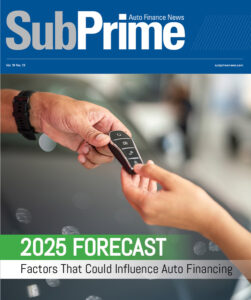With another 50 basis-point interest rate rise, US economy could be near ‘terminal’ point

With another lift of 50 basis points on Wednesday, the Federal Reserve now has pushed the federal funds rate higher by 425 basis points this year to the 4.25% to 4.50% range.
While Federal Reserve chair Jerome Powell emphasized the importance of getting inflation under control, Cox Automotive chief economist Jonathan Smoke cautioned that “the Fed is now risking that monetary conditions, once rates reach the terminal point, could be near ‘terminal’ for the economy as well, especially with the intent to move higher a few more times early in 2023.”
Smoke explained in a blog post following the policymakers’ last and unanimous move of the year that the average interest rate on auto financing has climbed more than 3 percentage point this year with the Cox Automotive expert expecting that have to rise another 1 to 2 percentage points, climaxing at levels not seen in more than 20 years.
“Looking ahead, a weak economy with job losses is not good for vehicle demand. Payment affordability will be much more of an acute challenge in 2023 than what has been experienced over the last two decades,” Smoke wrote in his blog.
“As a result of higher rates, consumers who are most payment sensitive have been falling out of the market. We have seen this most clearly in subprime and deep subprime consumers disappearing from both the new and used markets. We also see a corresponding rise in the share of higher-income consumers at the expense of lower-income consumers,” he continued.
No matter what might be happening at dealerships and finance companies, Powell is most concerned about inflation.
“I would like to underscore for the American people that we understand the hardship that high inflation is causing and that we are strongly committed to bringing inflation back down to our 2 percent goal,” Powell said in his opening statement on Wednesday. “Over the course of the year, we have taken forceful actions to tighten the stance of monetary policy.
“We have covered a lot of ground, and the full effects of our rapid tightening so far are yet to be felt. Even so, we have more work to do. Price stability is the responsibility of the Federal Reserve and serves as the bedrock of our economy. Without price stability, the economy doesn’t work for anyone. In particular, without price stability, we will not achieve a sustained period of strong labor market conditions that benefit all.”
Smoke discussed inflation, too, and explained how the used-vehicle market can help the Fed reach its objectives.
“Demand will continue to be challenged as long as rates continue to rise. Once rates peak and stabilize, depreciation will increasingly produce buying opportunities in the used market. Those opportunities will help to stabilize vehicle values and return the market to seeing normal depreciation rather than the abnormal increases and decreases the market has experienced since 2020,” Smoke said.
“For much of the next year, we expect used retail prices to help bring down overall consumer inflation, just as it has done this fall. When this chapter is finally over, used cars will have followed a transitory path up and then down, defined by the market forces of supply and demand,” he continued.
“The Fed’s actions influence demand. By reducing demand and tilting the new market to further favor wealthy consumers, supply will take longer to normalize. The auto market will be living with the aftereffects of this rate roller coaster ride for several years to come,” Smoke went on to say.

 View The Latest Edition
View The Latest Edition

